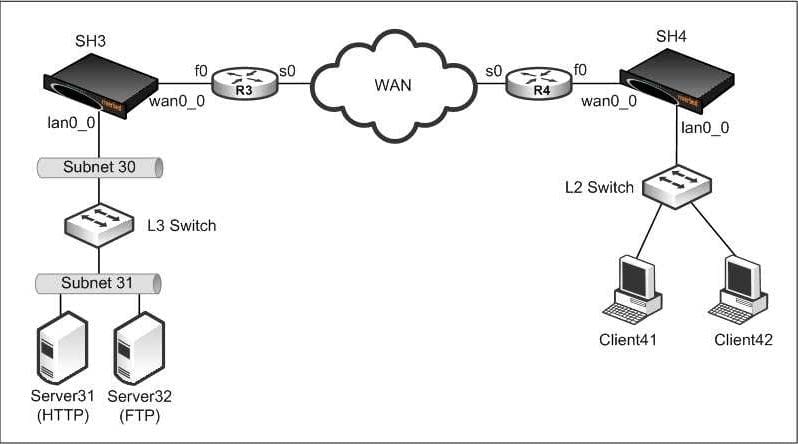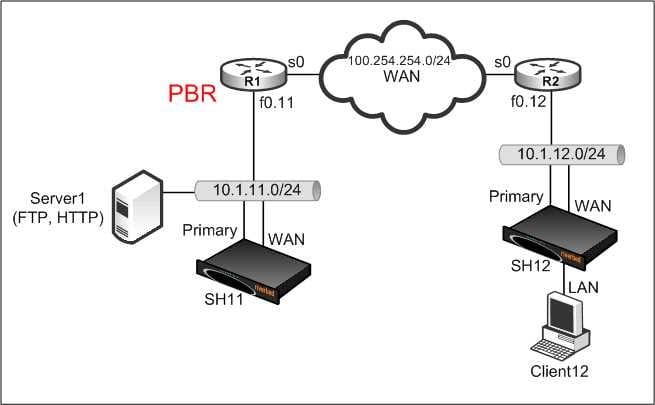Exam Details
Exam Code
:830-01Exam Name
:RCPE Certified Professional WAN OptimizationCertification
:Riverbed CertificationsVendor
:RiverbedTotal Questions
:402 Q&AsLast Updated
:Jul 29, 2025
Riverbed Riverbed Certifications 830-01 Questions & Answers
-
Question 151:
What port number is configured on a Steelhead appliance to communicate to the TACACS+ server?
A. 1645
B. 1646
C. 1812
D. 389
E. 49
-
Question 152:
Which of the following custom TACACS+ attribute-value (AV) pairs gives the user administrative privileges?
A. local-user-name=superuser
B. local-user-name=admin
C. local-user-name=administrator
D. local-user-name=monitor
E. local-user-name=guest
-
Question 153:
Which of the following authentication methods are supported by the Steelhead appliance?
A. RADIUS and Local
B. TACACS and Local
C. TACACS, RADIUS, and Local
D. TACACS, Kerberos, and Local
E. TACACS, RADIUS, Kerberos, and Local
-
Question 154:
What is the default authorization policy used by Steelhead appliances?
A. Remote-Last
B. Local-Only
C. Local-First
D. Remote-Only
E. Remote-First
-
Question 155:
What is the command to view configuration files on the CLI?
A. configuration files display
B. configuration files view
C. configuration files show
D. show configuration files
E. show configuration files all
-
Question 156:
In a previously optimized environment, users have recently upgraded their Windows XP workstations to Windows 7. After the upgrade, users are complaining about slow CIFS and encrypted MAPI performance. What is the most likely cause?
A. The Steelhead appliance is only configured for transparent mode for SMB signing and MAPI encryption.
B. Windows 7 is not supported.
C. The client-side Steelhead appliance is not joined to the domain.
D. The server-side Steelhead appliance is not joined to the domain.
E. The Steelhead appliance only supports NTLM.
-
Question 157:
In a WCCP configuration, during a packet trace, you notice the return WCCP communication on a CAT 6500 is using GRE. The Steelhead appliance is directly connected to it. What can be done to alleviate the router's CPU? (Select 2)
A. Force L2 return
B. Use PBR
C. Use peering rules to avoid using GRE altogether
D. Use NBAR to redirect
E. Nothing can be done to force traffic as a different return
-
Question 158:
What CLI command is used to view logs?
A. show log
B. show debug logging enable
C. show debug logs enable
D. view debug generate dump
E. view logs
F. tail -f/var/logs
-
Question 159:
In the exhibit, there is a resident firewall inside the WAN cloud that drops packets with any TCP option. The customer allows you to use fixed-target rules instead. The firewall policy can only allow unassigned ports 7750-7751 to pass-through it. Additionally, the SH3 has been configured with service port 7750, while SH4 has been configured with service port 7751. Which of the following fixed-target rule specification is correct?

A. The fixed-target rule at SH4 peers to the inpath0_0 IP address of SH3 as the target appliance with port number 7800. The fixed-target rule at SH3 peers to the inpath0_0 IP address of SH4 as the target appliance with port number 7800.
B. The fixed-target rule at SH4 peers to the inpath0_0 IP address of SH3 as the target appliance with port number 7810. The fixed-target rule at SH3 peers to the inpath0_0 IP address of SH4 as the target appliance with port number 7810.
C. The fixed-target rule at SH4 peers to the inpath0_0 IP address of SH3 as the target appliance with port number 7750. The fixed-target rule at SH3 peers to the inpath0_0 IP address of SH4 as the target appliance with port number 7750.
D. The fixed-target rule at SH4 peers to the inpath0_0 IP address of SH3 as the target appliance with port number 7751. The fixed-target rule at SH3 peers to the inpath0_0 IP address of SH4 as the target appliance with port number 7750.
E. The fixed-target rule at SH4 peers to the inpath0_0 IP address of SH3 as the target appliance with port number 7750. The fixed-target rule at SH3 peers to the inpath0_0 IP address of SH4 as the target appliance with port number 7751.
-
Question 160:
A server-side logical in-path deployment is shown in the exhibit. Additionally, SH12 is configured with a fixed-target rule pointing to SH11. The client behind SH12 will not be able to establish a connection to SERVER1 as a logical loop will occur when the number of optimized connections in SH11 has reached the maximum system limit.

What is the best way to resolve this issue?
A. Use the largest Steelhead appliance model
B. Enter the "in-path loopguard enable" command
C. Use more than one Steelhead appliance
D. Limit the number of TCP connections to be optimized
E. Put SERVER1 in a different subnet from SH11
Related Exams:
101-01
Riverbed Certified Solutions Associate201-01
Riverbed Certified Solutions Associate - Network Performance Management299-01
Riverbed Certified Solutions Professional - Network Performance Management499-01
Riverbed Certified Solutions Professional - Application Performance Management501-01
Riverbed Certified Solutions Associate - Hyper-converged Branch599-01
Riverbed Certified Solutions Professional - Storage Delivery Exam810-01
RCPE Certified Professional Network & Infrastructure Visibility830-01
RCPE Certified Professional WAN Optimization
Tips on How to Prepare for the Exams
Nowadays, the certification exams become more and more important and required by more and more enterprises when applying for a job. But how to prepare for the exam effectively? How to prepare for the exam in a short time with less efforts? How to get a ideal result and how to find the most reliable resources? Here on Vcedump.com, you will find all the answers. Vcedump.com provide not only Riverbed exam questions, answers and explanations but also complete assistance on your exam preparation and certification application. If you are confused on your 830-01 exam preparations and Riverbed certification application, do not hesitate to visit our Vcedump.com to find your solutions here.